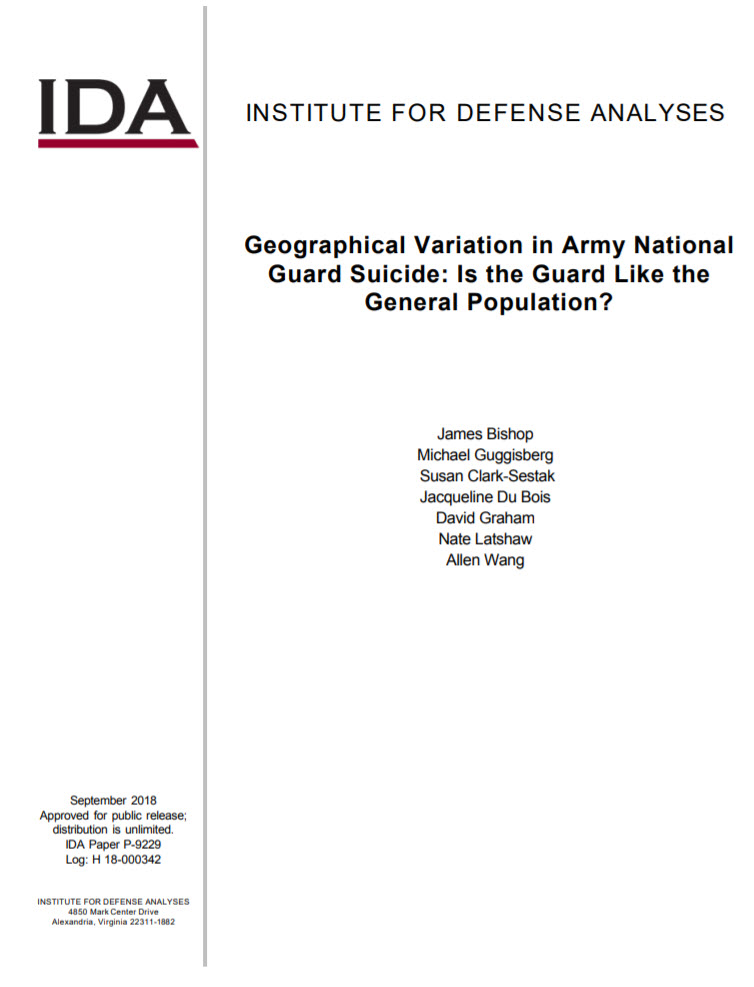Geographical Variation in Army National Guard Suicide: Is the Guard Like the General Population?
September, 2018
IDA document: P-9229
FFRDC: Systems and Analyses Center
Type: Documents,
Talent Management
Division: Strategy, Forces and Resources Division
Authors:
IDA document: P-9229
FFRDC: Systems and Analyses Center
Type: Documents
Division: Strategy, Forces and Resources Division
Authors:
Authors
James Bishop, Michael Guggisberg, Susan Clark-Sestak, Jacqueline Du Bois, David Graham, Nate Latshaw, Allen Wang
See more authors

